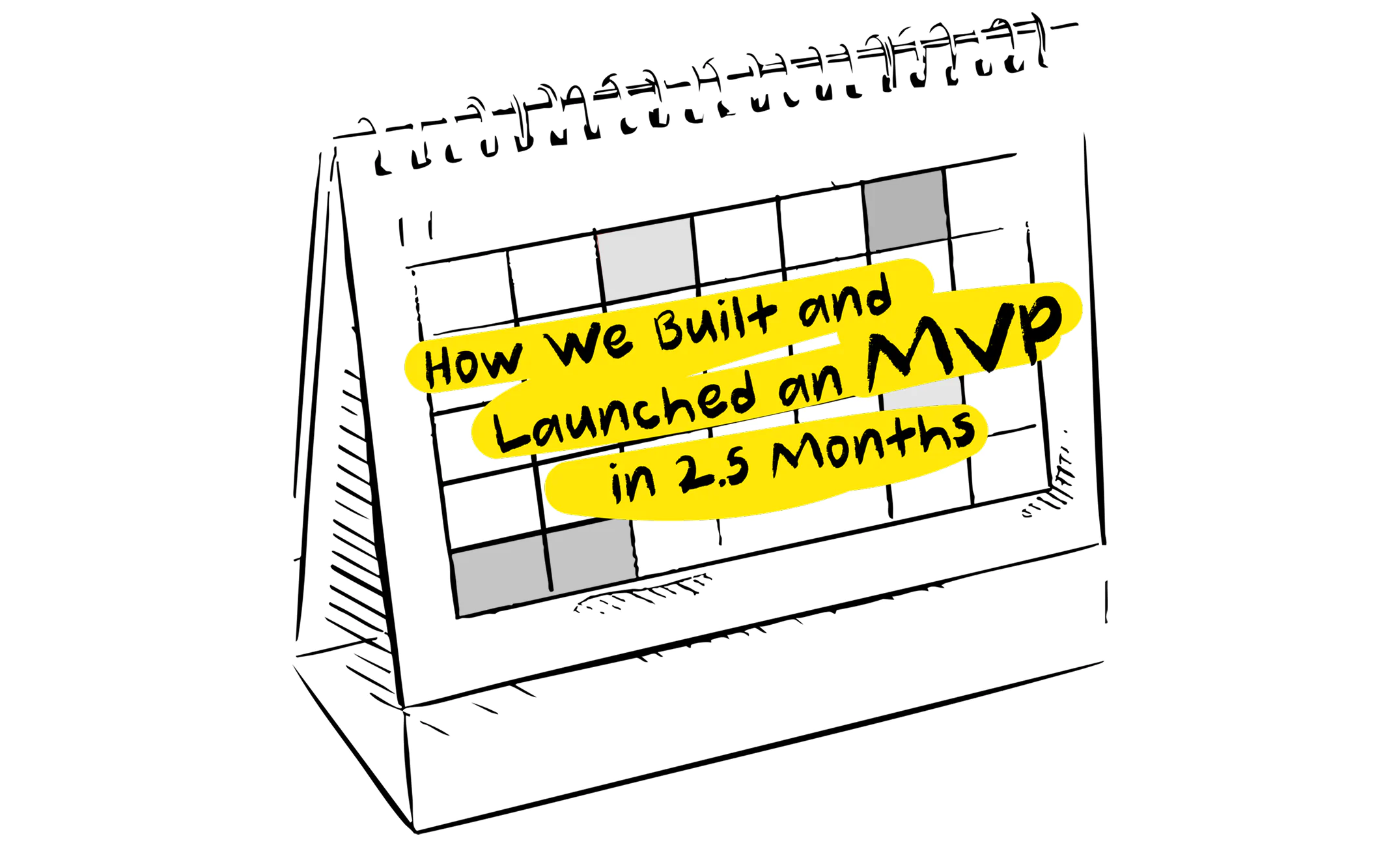Written by Vitaliya Deyko, SEO Team Lead at mr.Booster
Hello, my name is Vita, and I’ve been working in organic traffic optimization for over six years. Today, I’d like to share a case study that demonstrates how an impactful organic traffic growth can be achieved in just 4 months in a highly competitive niche, specifically the automotive sector.
Last year, a new client approached me with a challenge: their organic traffic had been stagnant for nearly six months. The business operates in the luxury car rental industry in the UAE, a lucrative and competitive market dominated by large aggregator sites. The objective was clear—accelerate organic growth at any cost.
In this article, I’ll cover:
- How to initiate work on a new project efficiently
- How to identify hidden problems
- The specific steps I made that led to a significant increase in organic traffic
- 4 things you can implement today to improve your website performance.
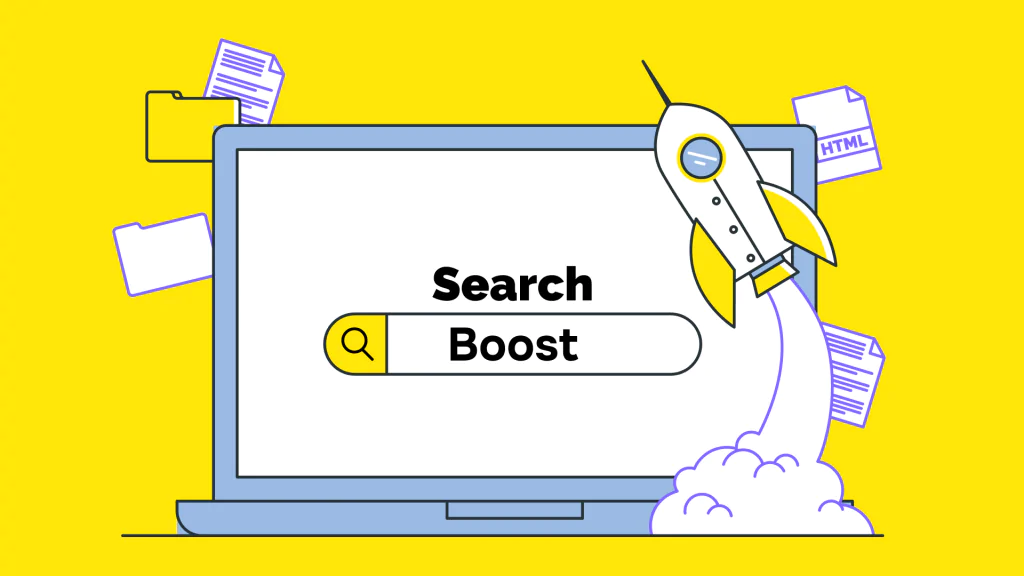
Step 1: Laying the Groundwork with Client Collaboration
The first thing to understand when working on any new project is identifying the client’s goals. These can vary depending on the business:
- Increasing website traffic
- Achieving top rankings for specific regions
- Improving conversion rates.
Defining these goals clearly at the outset not only simplifies the task at hand but also streamlines the strategy, ensuring more effective results. Understanding the final goal enables us to focus on the aspects that will deliver the most value to the client.
Allocating Responsibilities: What to Expect from the Client
For a successful collaboration, it is critical to delineate responsibilities between the client and the SEO specialist. There is key information that only the client can provide, and without this, developing an effective strategy becomes nearly impossible.
The client’s role includes:
- Defining the target audience: Who are they, what are their needs, and what is most important to them?
- Identifying the geographical reach of the business: Which countries or regions are priorities?
- Providing a unique value proposition (UVP): What differentiates their business from competitors?
This foundational information allows the SEO expert to tailor strategies specifically to the client’s business objectives, ensuring maximum value is delivered.
Allocating Responsibilities: What to Expect from SEO Specialist
From the SEO specialist’s side, it is crucial to comprehensively understand the client’s business, including the brand, audience characteristics, positioning, and goals.
In this particular case, the project came to me with a pre-existing semantic core, decent optimization, and even a competitive analysis. However, not every project will be so well-prepared, so let’s outline the essential first steps for any new project:
- Technical Audit: Though it may seem elementary, a thorough technical audit remains a cornerstone of any SEO strategy. Identify and rectify errors, as many websites experience traffic growth simply by ensuring their technical foundations are solid.
- Brand Analysis: Understand the brand’s market presence, reputation, and its current brand recognition. I recommend assessing the brand’s visibility and reviews across all relevant geographies.
- Semantic Core Development: Without a well-structured semantic core, understanding the nuances of a new niche and creating a content strategy is impossible. Moreover, reviewing the semantic core will reveal missing clusters that are crucial to the site’s success.
- Competitor Analysis: This step provides deep insights into the niche, current market trends, competitors’ strengths and weaknesses, and strategic opportunities for improving your own SEO.
- Backlink Profile Analysis: Building a strong backlink profile is essential. By analyzing competitors’ link-building efforts, you can determine how many backlinks are needed to rank in the top search results.
- SEO Strategy Development: Once the aforementioned steps are completed, consolidate this information into a coherent SEO strategy aimed at achieving high rankings and traffic growth.
Step 2: Identifying and Solving Key Issues
The Initial Website Review
The website in question had a fairly standard structure, including:
- A homepage
- Service pages (About, ToS, Contact, etc.)
- Car category pages (11 landing pages with pagination)
- Car brand pages (17 landing pages with pagination)
- 90 car model pages, each allowing a rental request.
The website offered around 10 language versions, with English as the primary language. It was built on Next.js.
The website had multiple language versions, with English as the primary language. It was built using Next.js, a modern framework for JavaScript.
At first glance, the website seemed to have solid technical optimization: good load speeds, decent mobile usability, and a comprehensive content strategy. The website also had an active presence on social media channels like Instagram and YouTube. Despite all this, organic traffic had stagnated over a six-month period. Clearly, there was untapped potential.
Identifying Non-Obvious Issues That Affected Traffic Growth
- Misaligned User Intent on Commercial Pages
One of the biggest challenges I identified was the misalignment of user intent on the category and brand pages. Many visitors were landing on these pages expecting clear information, yet the pages were cluttered with car listings. For users accessing the site via mobile devices—who represented the majority of traffic—this resulted in a poor experience. The car listings were not immediately visible, and users had to scroll down to find what they were looking for.
To remedy this, I worked with the development team to adjust the page layout. We moved key car listings to the top of the page for mobile users, ensuring they could view available cars within the first screen of their mobile view. This improvement reduced bounce rates and increased the time users spent on the site, which also contributed positively to search rankings.
- 404 Errors and Technical Issues in Google Search Console
Upon conducting a detailed review of the website in Google Search Console, I found a significant number of 404 errors related to JavaScript and CSS files. These errors stemmed from old URLs that had been cached by Google. As a result, Googlebot was unable to access and index certain parts of the site properly.
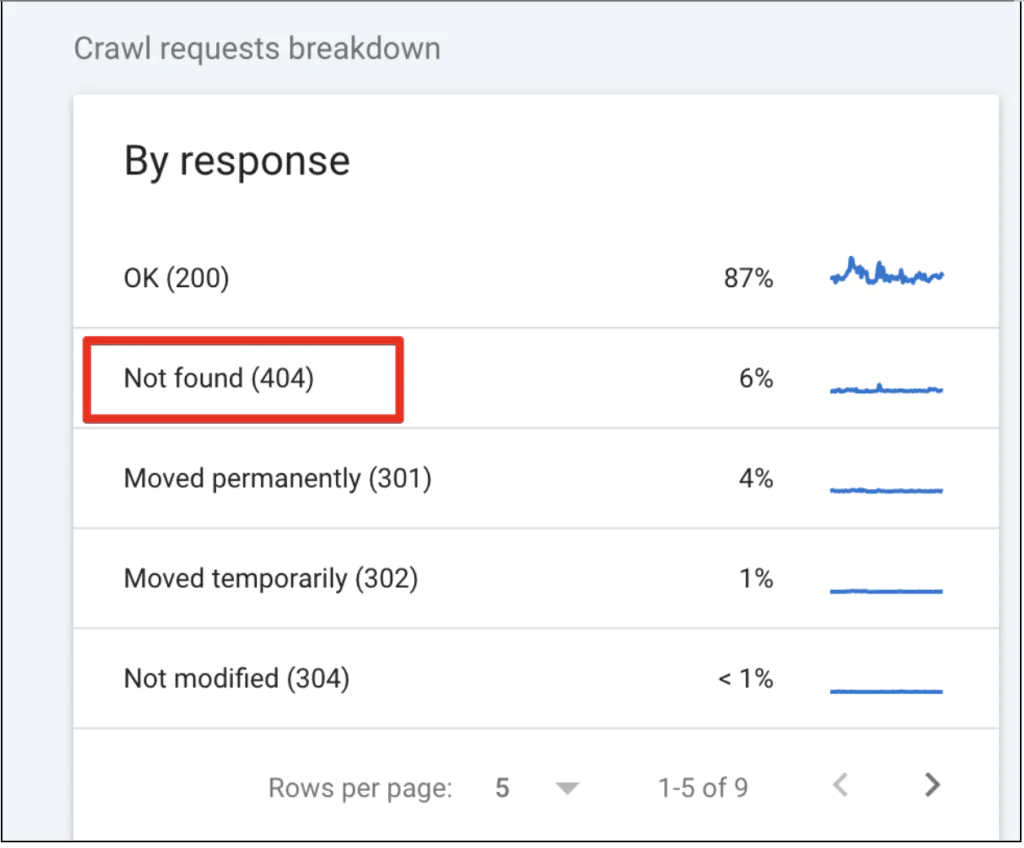
I coordinated with the development team to implement versioning for the style files, which effectively resolved the 404 errors and allowed Googlebot to index the content more efficiently. Once this technical issue was resolved, crawl efficiency improved, leading to better rankings for several pages that had previously been overlooked due to poor indexing.
3. Content Cannibalization on Model Pages
Another important issue I uncovered was content cannibalization between pages targeting similar keywords. For example, there were two pages about the Cadillac Escalade and Cadillac Escalade Luxury that competed for the same keywords. This overlap meant that both pages were vying for the same search results, preventing either from ranking as well as it could have.
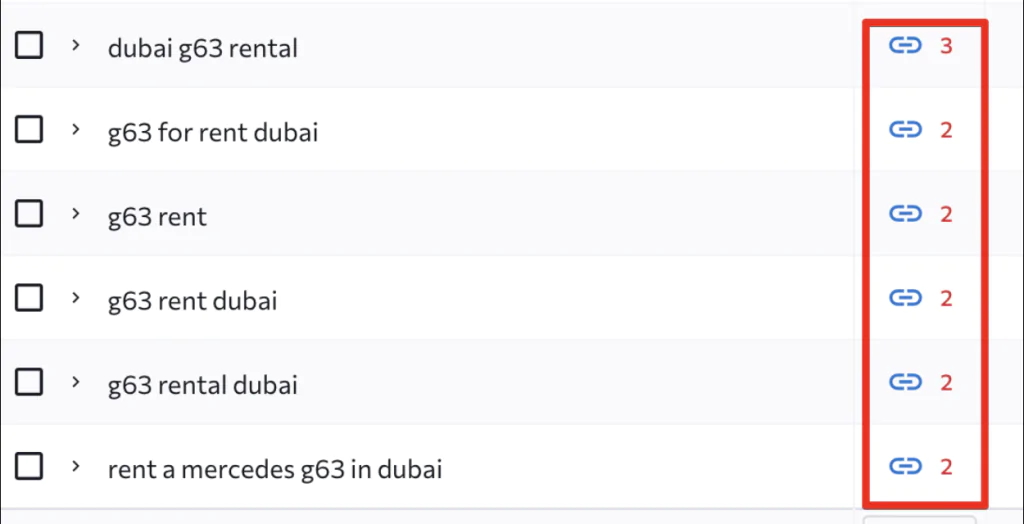
4. SEO Content Display Issues on Pages
The next thing I decided to tackle was how the SEO content was being displayed across the website pages. I noticed that all the optimized text was hidden under a “dropdown” that required users to click a “Show more” button to read the full content.
Why is this a problem?
From a user perspective, this might seem perfectly fine. The page stays visually clean, and anyone interested in the full content can click to expand it. But from an SEO standpoint, having content hidden like this can be a serious issue.
I had a hunch that Googlebot might not be able to access this hidden content. To check, I disabled JavaScript and switched the user agent to Googlebot. Sure enough, the content hidden under the dropdown wasn’t included in the raw HTML — to get to it, the bot would need to run JavaScript. Whether or not Googlebot actually does this is something only the bot knows. So, to be on the safe side, I decided to remove the dropdowns and display the full SEO content on the pages.
After making these changes, I saw significant improvements in the rankings of those pages that had been stagnating before.
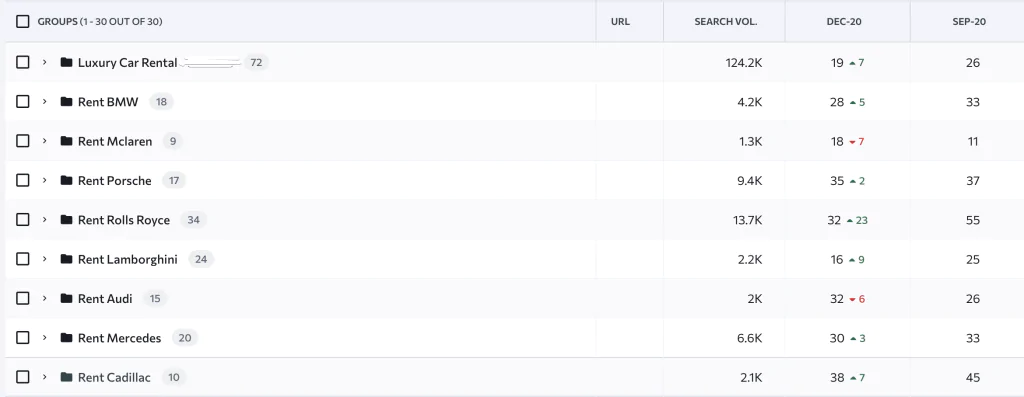
5. Improving Snippets and Click-Through Rate (CTR)
After addressing the technical issues and optimizing the site structure, I turned my attention to improving the website’s click-through rate (CTR). CTR is a critical component of SEO performance, as it directly influences rankings and user engagement.
Initially, the website’s meta descriptions were not optimized effectively. In many instances, Google would pull random text from the page rather than the carefully written descriptions we had provided. This often resulted in less-than-optimal search snippets.
I rewrote the meta descriptions, ensuring that they were engaging and informative. Importantly, I included relevant pricing information where applicable, as this has been shown to increase CTR, especially in competitive niches like luxury car rentals. These adjustments led to a significant improvement in CTR, which in turn contributed to higher rankings and more organic traffic.
Step 3: Fine-Tuning SERM Strategy
Once we began to see growth in organic traffic, I shifted my focus to managing and enhancing the brand’s reputation. In the competitive automotive rental space, reputation is everything. Potential customers often rely on reviews and feedback before making decisions.
To improve the company’s reputation, I put a structured Search Engine Reputation Management (SERM) strategy into place, focusing on the following:
- Encouraging Reviews: I worked with the client to solicit reviews from past customers on high-visibility platforms like Trustpilot and Google Reviews. Positive reviews significantly improve both rankings and the likelihood that users will engage with the brand.
- Google My Business Optimization: Although the brand had a Google My Business profile, it was underutilized. I made sure to optimize it by adding complete business details, high-quality images, and regular updates. This helped increase the brand’s local visibility and foster trust with users.
- Active Social Media Engagement: The client had already built a presence on platforms like Instagram and YouTube. I made sure to keep the engagement levels high by posting consistently and interacting with followers. Social signals, such as likes, comments, and shares, can indirectly impact SEO by increasing brand visibility.
Results of Implementing the SERM Strategy
Two months after the SERM strategy was put in place, the results were clear:
- Brand Demand: Searches for the brand grew almost x3, indicating a significant increase in brand awareness.
- User Loyalty: User trust and loyalty improved as the brand’s active presence on authoritative review platforms like Trustpilot gained more traction, leading to an enhanced reputation.
- Branded Traffic Growth: Along with these improvements, branded traffic saw an explosive increase, marking a key milestone in the project’s success.
These efforts were pivotal in strengthening the brand’s online presence and played a significant role in sustaining long-term SEO success.
Backlink Profile Analysis and Cleanup
While implementing the SERM strategy, I noticed a sudden spike in referring domains in September 2024. After checking with the client, I found that this increase was unplanned, with many new backlinks coming from low-quality websites—sites with zero domain rating (DR) and no organic traffic.
Suspecting a competitive attack, I took immediate action to protect the site:
- Extracted backlinks from low-quality domains.
- Created and submitted a disavow file through Google Search Console.
This cleaned up the backlink profile, removing harmful links and helping restore the site’s SEO integrity.
Effective Link Building and Resource Allocation
The final phase of the campaign focused on link-building. After all the technical optimizations and content updates were in place, it was crucial to ensure the website had a strong backlink profile to compete with top-ranking competitors.
Rather than engaging in mass link-building, I focused on obtaining high-quality links that would directly benefit the target pages. I prioritized six main clusters—specifically targeting car rental locations and luxury car categories—that generated the most conversions for the business. This focused approach to link-building allowed us to allocate the client’s budget efficiently while maximizing the potential for organic growth.
Through strategic outreach, relationship-building, and careful resource management, we were able to acquire backlinks from relevant industry publications, local influencers, and authoritative websites. This helped to improve the site’s domain authority, which, in turn, contributed to ranking improvements across all key pages.
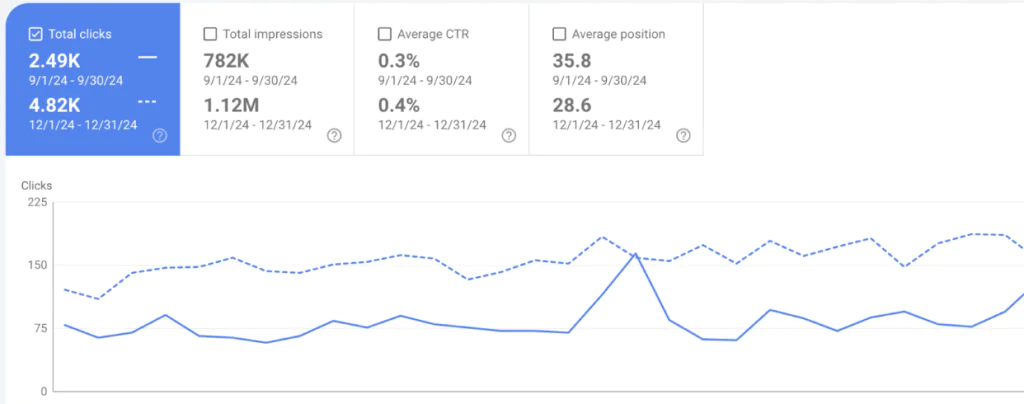
4 Key Takeaways for Your Website’s SEO Success
This case study serves as a testament to the importance of a comprehensive, data-driven SEO strategy. By identifying and addressing both obvious and non-obvious issues, we were able to achieve significant traffic growth within a short period.
Here are the key takeaways:
- Define clear client goals: Understanding whether the client is focused on traffic, rankings, or conversions is essential for creating a targeted SEO strategy.
- Technical and content optimization Is key: No matter how well-optimized a website seems, always perform an in-depth audit. Small technical issues or content gaps can have a significant impact on traffic.
- Brand reputation management (SERM) matters: Reviews, social engagement, and an optimized Google My Business profile contribute to increased trust, which directly impacts SEO.
- Prioritize resources for maximum impact: By focusing on the highest-performing content clusters and allocating resources accordingly, you can ensure that your SEO efforts generate measurable results.
In conclusion, an effective SEO strategy is a combination of technical proficiency, content optimization, reputation management, and link-building efforts. By taking a holistic approach, we managed to double organic traffic for a competitive website in just four months, and the client is now seeing a sustained increase in conversions and brand recognition.
Want to see similar results for your business? Contact mr.Booster to start optimizing your organic traffic and unlock your business’s potential.


